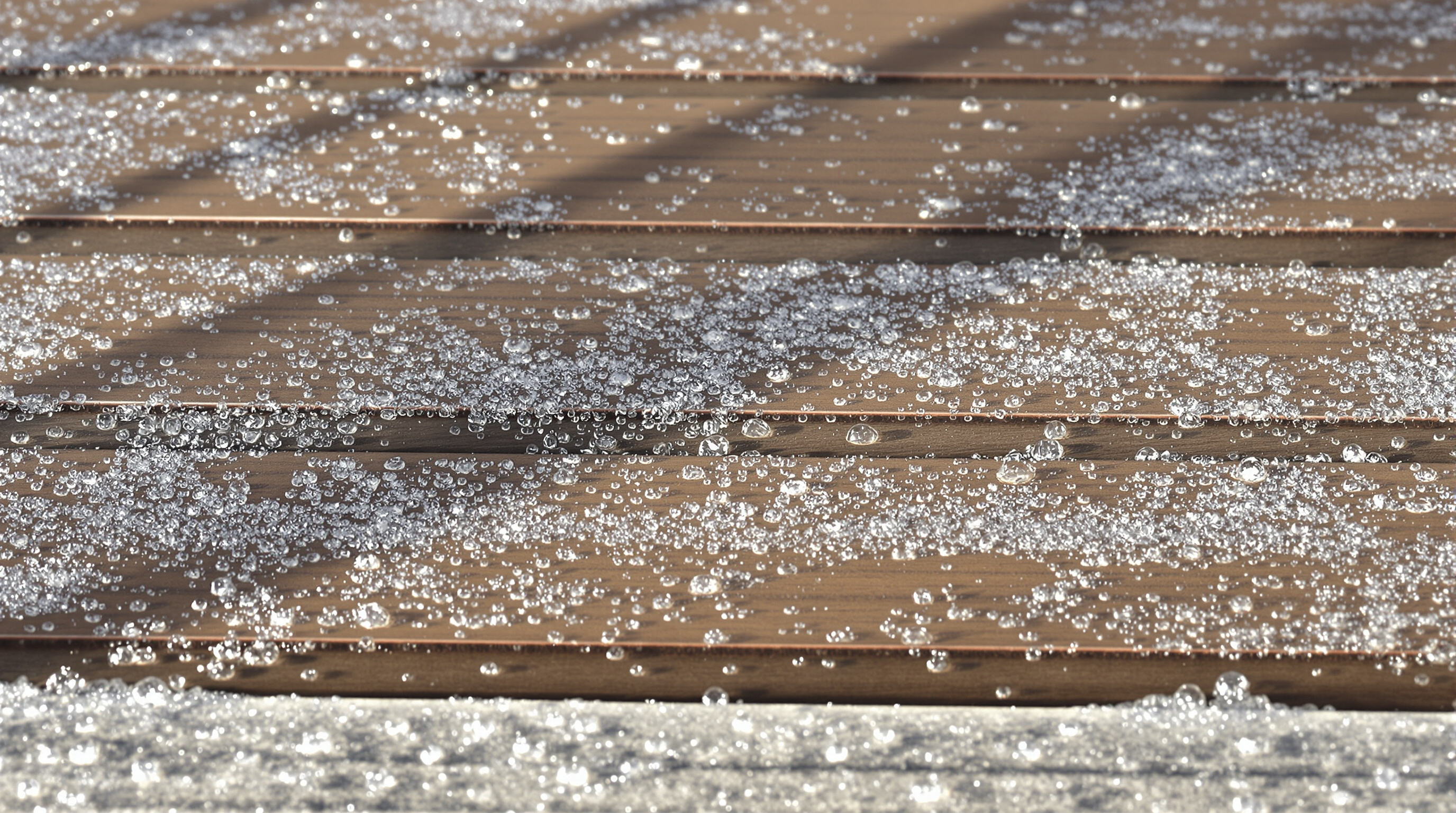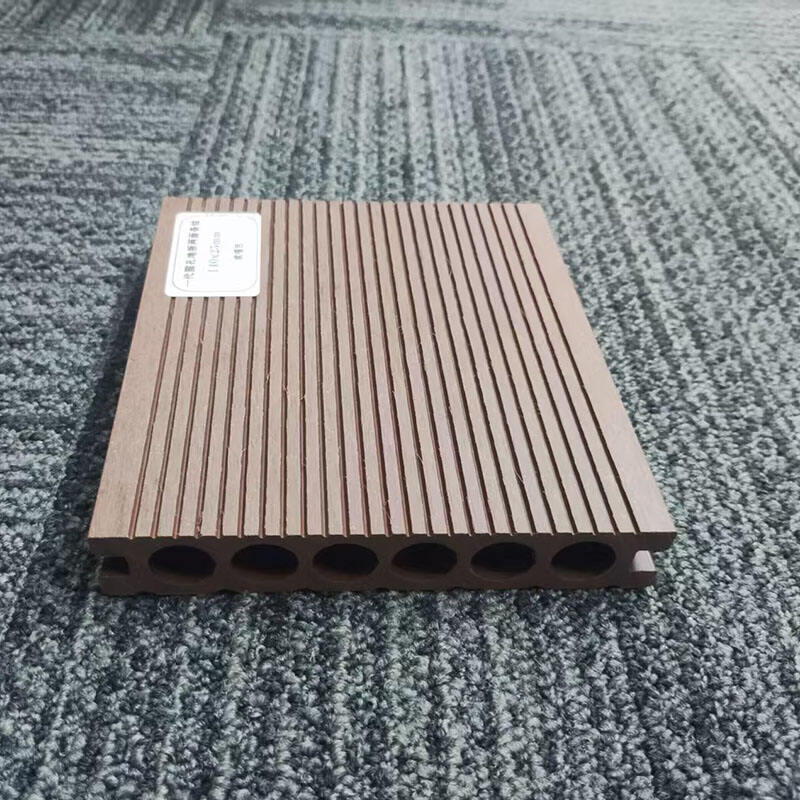The Global Rise of Plastic Wood Decking
Accelerated Adoption in Urban Construction and Infrastructure
Plastic wood decking has really taken off as a key component in city building projects lately. According to market research from Global Market Insights back in 2023, we're looking at around 9% growth each year until 2030 for this material. What's fueling all this interest? Well, countries with fast growing populations need to build lots of new infrastructure quickly. Places across Asia and Africa especially are turning to plastic wood because it lasts longer than regular stuff for things like walkways along beaches and platforms near train stations. These cities want something that won't rot or wear out so fast when exposed to weather and heavy foot traffic day after day.
Key Drivers: Sustainability Demand and Shift from Traditional Wood
Why are builders moving away from real wood? Mainly because about 58% of construction professionals have started going for composite materials instead of regular timber these days. They just last longer without rotting or getting eaten by bugs according to the National Association of Home Builders report from 2024. At the same time cities across the country are pushing green initiatives that require building materials made mostly from recycled plastic content ranging between 85 to 95 percent. These combined forces mean we're seeing fewer homes built with chemically treated wood anymore. Most new projects now specify some kind of composite decking or structural components made from recycled materials.
Market Expansion in North America and Europe
North America and Europe currently dominate plastic wood decking adoption, holding over 65% of the global market share. Regional growth hotspots like the U.S. Southwest show particular promise—2025 projections indicate 6.2% annual volume increases as homeowners prioritize hurricane-resistant materials.
Influence of Green Building Codes and Certifications
Stringent regulations are accelerating adoption, with LEED-certified building projects increasing 24% year-over-year in 2023 (U.S. Green Building Council). Updated EU construction standards now mandate 75% recycled content for exterior building materials, making plastic wood decking essential for developers pursuing green certifications.
Durability and Low Maintenance Advantages of Plastic Wood Decking

Performance in Harsh Climates: Resistance to Moisture, UV, and Temperature Swings
Plastic wood decks really stand up better than regular materials when faced with harsh weather. They just don't soak up water like real wood does – only about 0.5% moisture absorption versus around 15% for untreated lumber. Plus they handle sun damage much better too. According to research published last year by material engineers, plastic composite decks keep about 95% of their strength even after sitting through ten years of salt air and sea spray along coastlines, while pressure treated wood drops down to roughly 65%. The newer hybrid WPC products on the market today actually have special ingredients mixed in during manufacturing. These include stuff that fights off UV rays and controls how the material expands and contracts with temperature changes. As a result, these decks perform pretty consistently whether it's freezing cold at minus 40 degrees Fahrenheit or scorching hot at 120 degrees without warping or developing cracks over time.
Slip Resistance and Structural Longevity Enhance Safety
The latest plastic wood products come with specially designed textures that meet DIN 51130 standards for slip resistance (R10 to R11 ratings), which helps cut down on slips and falls outdoors by around 40% per the 2022 Outdoor Safety Index report. These materials have polymer cores engineered to avoid splinters completely and stand up against termites too something regular wood struggles with since about 17% gets eaten away over time in damp areas. Independent tests indicate that composite decks generally keep over 90 percent of their strength even after two decades of use, and many top brands now offer warranty coverage lasting up to 25 years, giving homeowners peace of mind about long term performance without all the maintenance headaches associated with traditional wood.
Minimal Maintenance Compared to Natural Wood: No Staining or Sealing Required
Plastic wood decking cuts down on about 87 percent of those yearly maintenance costs that come with real wood products. All it really needs is some basic cleaning a few times each season using just regular soap and water. According to the latest Decking Trends data from 2024, homeowners save around 32 hours for every 100 square feet they install when comparing plastic options to traditional wood decks that need constant staining and sealing over ten years. These days, manufacturers have improved their capstock technology so much that these surfaces resist stains almost as well as high end commercial countertops do. Independent testing shows most spills get wiped away easily with nothing more than plain water, with nearly all (like 99%) disappearing after a quick rinse according to lab results.
Key Maintenance Comparison Table
| Factor | Plastic Wood Decking | Pressure-Treated Wood |
|---|---|---|
| Annual Cleaning Time | 0.5 hours | 3.2 hours |
| Refinishing Interval | Never | Every 2-3 years |
| Moisture Damage Risk | <1% | 22% |
| Lifespan (Years) | 25-30 | 10-15 |
Sustainability and Recycled Materials in Plastic Wood Decking

Reducing Deforestation and Landfill Waste Through WPC Innovation
Wood Plastic Composite or WPC decking keeps around 3.7 million tons of plastic out of landfills each year according to the EPA report from 2023. Plus it helps take some weight off our already strained timber resources worldwide. The material is made by mixing old wood fibers with recycled plastic, which means about 22 percent more forest areas stay untouched than what happens with regular decking options. Most big name producers are actually using nearly all post industrial plastic waste in their products these days. This creates really tough outdoor surfaces without needing any new raw materials extracted from nature.
WPCs as a Circular Economy Solution: From Recycled Plastics to Long-Life Products
A typical WPC deck actually incorporates around 1,200 used plastic bags along with about 30 pounds worth of leftover wood scraps, turning what would otherwise be trash into something durable enough to last over quarter century. The way these materials get reused fits right into what experts call circular economies, something the World Green Building Council confirmed back in their 2024 report. Regular wooden decks tend to rot away within just seven to ten years, but WPC products keep holding up throughout their entire lifespan without falling apart so quickly, which means fewer replacements down the road.
Lower Carbon Footprint via Material Engineering and Efficient Production
Advanced extrusion techniques reduce WPC production energy by 40% compared to 2019 industry standards, while carbon-negative fillers like rice husk ash offset 15% of emissions. A 2023 lifecycle analysis showed WPC decking generates 62% less CO per square foot than pressure-treated lumber, with further reductions expected as bio-based polymers reach commercial scale.
Residential and Commercial Applications of Plastic Wood Decking
Growing Use in Home Decks, Patios, and Renovations
Plastic wood decking is really taking off in home design these days. The numbers look pretty impressive too - around half of all market revenue should come from homes by 2025 according to Future Market Insights. People love using this stuff for their backyards, patios, and even when redoing old decks because it looks good while being super practical. Traditional wood just can't compete since plastic wood won't warp, splinter, or get eaten by bugs which matters a lot in areas where folks spend time outdoors regularly. A recent study from the New Home Trends Institute showed something interesting as well. About eight out of ten residential architects are choosing composite options like plastic wood instead of real wood nowadays. Clients want things that don't need constant maintenance but still look great after years of exposure to sun and rain.
Expansion into Commercial Spaces: Boardwalks, Parks, and Public Infrastructure
What makes this material so popular? Well, it lasts forever and won't let anyone slip on it either. That's why so many towns and building companies have started using plastic wood decks everywhere from boardwalks to parks and even benches where people sit for hours. Take those beachside towns for instance they love putting this stuff down along the water because regular wood just falls apart after getting hit by seawater and sun all day long. Money wise, there's another big plus too nobody has to spend thousands every year painting or sealing the decks anymore. Some places report saving almost two thirds of what they used to pay for maintenance when switching from real wood. And let's not forget about the environment factor here since most of this product actually comes from recycled materials, which is helping local governments check off boxes on their sustainability reports without breaking a sweat.
Market Trends and Future Growth of the Plastic Wood Decking Industry
Global WPC Market Projections and Key Regional Opportunities
Wood plastic composite or WPC decking seems to be on an upward trend, with forecasts suggesting it will expand at around 7.7% per year until 2034 when global sales might hit about $12 billion. This growth comes from tougher environmental regulations plus more people moving into cities. North America remains ahead of the pack because builders there need materials that can withstand harsh weather conditions. The US Southwest region has actually seen installations increase by roughly 2% each year according to some industry reports from last year. Not far behind is Asia Pacific, where governments are pushing for greener construction practices as they build new roads, housing developments and commercial buildings across the region. These areas favor materials that don't require constant maintenance either.
Balancing Higher Initial Cost with Long-Term Lifecycle Savings
Plastic wood decking does come with a higher price tag, usually around 15 to 30 percent more than regular wood at first glance. But when looking at the big picture, these materials last well over two decades without needing all that yearly staining, sealing work or dealing with rot issues that plague traditional decks. According to various market analyses, most folks end up making back their extra investment within just eight to ten years because they spend so much less on upkeep. The numbers tell an interesting story too many professionals in construction are starting to notice. Composite decking sales have been growing steadily at about 16.6% each year according to projections extending through 2029, largely because contractors now think beyond initial prices and consider what something will actually cost over time instead of just what it takes to install right away.
FAQ
What are the key benefits of using plastic wood decking?
Plastic wood decking offers superior durability, low maintenance, resistance to moisture, UV rays, and temperature extremes, slip resistance, and a longer lifespan compared to traditional wood.
How sustainable is plastic wood decking?
Plastic wood decking is highly sustainable, utilizing a significant amount of recycled materials and reducing deforestation and landfill waste. It contributes to a circular economy and yields a lower carbon footprint.
What are the main applications for plastic wood decking?
The material is extensively used in residential settings for home decks, patios, and renovations, and in commercial spaces like boardwalks, parks, and infrastructure projects due to its longevity and safety features.
Is plastic wood decking cost-effective in the long run?
Although the initial cost is higher than traditional wood, plastic wood decking requires less maintenance over its lifespan, leading to overall cost savings within 8 to 10 years.
Table of Contents
- The Global Rise of Plastic Wood Decking
- Durability and Low Maintenance Advantages of Plastic Wood Decking
- Sustainability and Recycled Materials in Plastic Wood Decking
- Residential and Commercial Applications of Plastic Wood Decking
- Market Trends and Future Growth of the Plastic Wood Decking Industry
- FAQ

